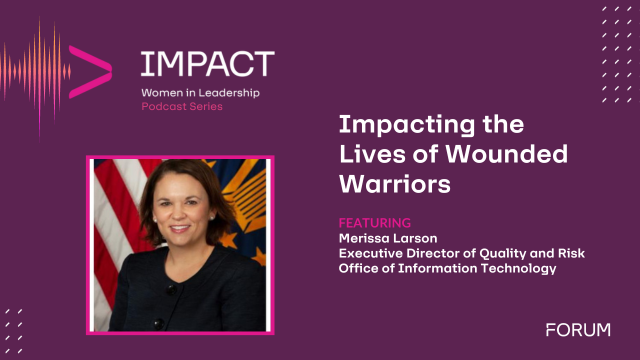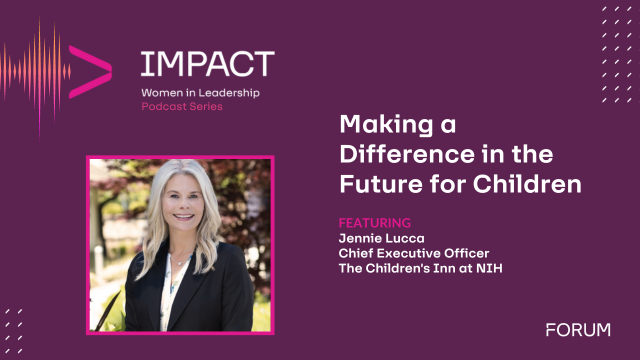A Conversation with José Arrieta
This article was featured in the recent FedHealthIT Winter 2020 Magazine.
Just a few months after he stepped into the role of Chief Information Officer at the Department of Health and Human Services, FedHealthIT’s President, Susan Sharer, took the opportunity to connect with José Arrieta to find out how he was prioritizing and working with other CIOs and what opportunities he saw in the future for industry to connect.
With All That is Going On, how do You Prioritize?
The first thing we always have to do is look at the legal framework that drives what we do. Congress has put in place a strong framework focused on modernization that really empowers the CIO to drive and engage on investment decisions. FedRAMP, for instance, encourages that move to the cloud but within a secure environment, when it makes sense and in a way that will save money.
Other components of that framework, FITARA and MGT Act, state that when we use modern technologies, move to the cloud, use artificial intelligence, blockchain and so on to save money and increase security, that we can reinvest those savings.
My focus and priority is: To move to the cloud with a focus on maximizing the use of data; to ensure that any modernization is delivering value to customers; to pilot emerging technologies to facilitate change and lower cost, and strengthen cyber security both internally and across the health care sector through effective communications, automation and improved cyber hygiene.
This is where we want to focus our resources – our people, our budget – but it also means establishing metrics to measure how we are really doing. Now that the priorities have been set, we’re working on specific operational and accountability metrics to drive toward these objectives.
Priorities for industry and workforce
There are key focus areas from a foundational perspective that enable the priorities we’ve set. We need to get better at customer service and create data sets and metrics to ensure we are delivering quality service. We need to be really good at communicating with partners, be open to partnerships with industry and with our own workforce so they all know where we are going and have the opportunity to bring really great ideas to the table. We also need to be able to commit to hire as quickly as possible. Based on the nature of talent movement, we need to capture and be able to leverage talent while it is here. I hope to get really good at these things so new future leadership can easily transition and continue to deliver on these goals. Finally, we need to focus energy on effective communication that resonates and is relevant with our stakeholders.
What Innovation or Standardization do You See That Can Benefit Other CIOs?
From a standardization perspective, we see the Agency moving to cloud platforms to deliver more efficient outcomes that are focused on maximizing the use of data. The question is how quickly and using what approach. There are fantastic CIOs across the Agency who are all driving towards an amazing mission and I have been engaging them to talk about strategy.
We have been driving towards HHS Accelerate and while there is a lot of talk about blockchain, that is just a small piece of the infrastructure that can support and that can be expanded in many ways to support the mission. HHS Accelerate though is less about technology than about a go-to-market strategy.
 Instead of awarding an IDIQ that could take a year or more to award, we set out to find companies that are really great at solving problems. Something interesting I learned along the way, working with these small companies with really brilliant people, is that one reason they stay small is just because they are so passionate and committed to and really good at solving problems. So we find this company that is really great at problem solving and then bring in another company really good at running multiple development teams, that again is small and really great at doing what they do. We haven’t awarded an IDIQ, haven’t spent that time or sat around waiting for a protest to be resolved, and within nine months we’ve created a functioning application layer and a built out model. We’re actually doing something.
Instead of awarding an IDIQ that could take a year or more to award, we set out to find companies that are really great at solving problems. Something interesting I learned along the way, working with these small companies with really brilliant people, is that one reason they stay small is just because they are so passionate and committed to and really good at solving problems. So we find this company that is really great at problem solving and then bring in another company really good at running multiple development teams, that again is small and really great at doing what they do. We haven’t awarded an IDIQ, haven’t spent that time or sat around waiting for a protest to be resolved, and within nine months we’ve created a functioning application layer and a built out model. We’re actually doing something.
We also understand that there are a lot of companies really great at data governance and integration that we can rely on so we can focus on building microservices that are tough to build. If we can develop an infrastructure that can work, take it through the ATO process, we can move forward with a framework for how we think we want to operate without dictating the technology involved.
That go-to-market strategy allows us to run a competitive procurement that says we have an application layer, a series of microservices, a lot of buy in (change management effort) from working with our workforce, and a pre-ATO framework that is already tested. All of this lowers the risk for technology firms to provide enterprise grade infrastructure to deliver the solution.
One of the ways we’ve been engaging CIOs is to share this as an approach they can take to move more quickly. The biggest challenge is navigating the acquisition lifecycle.
How, in This Process, Do You Bring On Board Contractors?
Using best-in-class contracting vehicles identified by OFPP, we can take advantage of opportunities without dictating to industry how to invest. It allows us to measure the ability to deliver something we know can work, but at scale. Within the CIO community, instead of focusing on a project to develop buy in, there is an opportunity to share things we have seen working, to ask questions about how others are doing Human Centered Design, ensuring the customer experience, moving to cloud…
Within our space we talk about FHIR and HL7 but no one outside of the space knows what that all means. At the macro level we need bulk data to share through APIs so hospitals can quickly identify issues. At the individual level, wouldn’t it be great to have an app to log into so medical history can be accessed in an emergency anywhere? The outcomes we are driving to, the outcome modernization drives, is the impact on people; that is the single most important thing.
In the private sector that is exactly what is happening, integration and vertical integration to use bulk data to drive direct individual impact.
What Opportunities are There for Industry to Partner?
There are a myriad of opportunities from cloud, to SaaS and PaaS, creating zero trusted environments, and governance, integration, and sharing will all be significant. There are services that technology companies can perform, deep learning capabilities, AI and so on that are high margin, exciting and cutting edge. This is an exciting time to be a contractor that understands the Federal Government and wants to solve some of the problems we have.
The ability to drive outcomes in the Federal Government requires strong partnership and open dialogue. We are very interested in partners that care about the mission space and are willing to invest time and energy in that space.
ABOUT JOSÉ ARRIETA
 As the CIO for HHS, José Arrieta provides leadership and oversight of the Department’s $6.3B IT portfolio in support of the Department’s expansive mission to enhance the health and well-being of Americans. He is responsible for providing assistance and guidance on the use of technology-supported business process reengineering; investment analysis; performance measurement; strategic development and application of information systems and infrastructure; policies to provide improved management of information resources and technology; and better, more efficient service to HHS clients and employees. José leads the development of HHS-wide IT strategy with an immediate focus on cybersecurity, cloud computing, and emerging technology. In addition, José provides advice and counsel to the Secretary and Deputy Secretary on how to advance the Department’s mission through the use of transformative information technology approaches. José brings over 15 years expertise in policy, procurement and technology solutions to HHS. He has deep experience in all phases of the acquisition life cycle and has served in a broad range of roles including contracting officer, budget manager, financial manager, small business executive, ombudsman, and program manager. He is a respected leader in applying emerging technologies, especially blockchain, artificial intelligence and robotic process automation, to the Federal acquisition process and mission critical program challenges.
As the CIO for HHS, José Arrieta provides leadership and oversight of the Department’s $6.3B IT portfolio in support of the Department’s expansive mission to enhance the health and well-being of Americans. He is responsible for providing assistance and guidance on the use of technology-supported business process reengineering; investment analysis; performance measurement; strategic development and application of information systems and infrastructure; policies to provide improved management of information resources and technology; and better, more efficient service to HHS clients and employees. José leads the development of HHS-wide IT strategy with an immediate focus on cybersecurity, cloud computing, and emerging technology. In addition, José provides advice and counsel to the Secretary and Deputy Secretary on how to advance the Department’s mission through the use of transformative information technology approaches. José brings over 15 years expertise in policy, procurement and technology solutions to HHS. He has deep experience in all phases of the acquisition life cycle and has served in a broad range of roles including contracting officer, budget manager, financial manager, small business executive, ombudsman, and program manager. He is a respected leader in applying emerging technologies, especially blockchain, artificial intelligence and robotic process automation, to the Federal acquisition process and mission critical program challenges.












